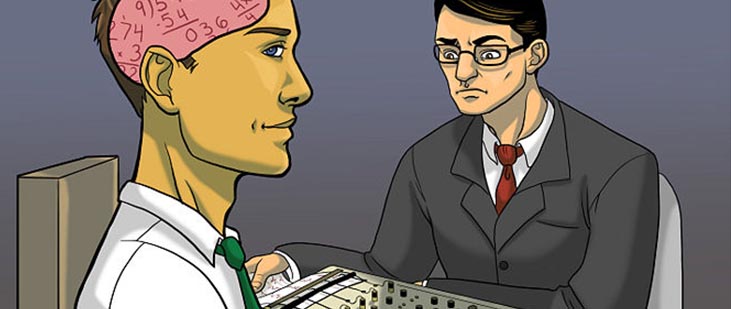By Virginia Hughes | National Geographic Phenomena: Only Human | September 30, 2014
You’ve no doubt heard about the polygraph and its use as a lie detector. The homely box records physiological changes — such as heart rate and electrical skin conductance — that are indirect signatures of emotion. Because these biomarkers tend to change when people tell lies, criminal investigators have long used the polygraph as a crude tool for detecting deception.
But there’s a huge problem with the polygraph: it’s all-too-frequently wrong. Truth-tellers may show a strong physiological response to being questioned if they’re nervous or fearful, which they often are — particularly if the target of a hostile interrogation.
“You end up with a lot of false positives,” says John Meixner, a law clerk to Chief Judge Gerald Rosen of the United States District Court for the Eastern District of Michigan. The traditional polygraph suffers not only from false positives, but missed positives: With a bit of training, liars can pass the test by intentionally turning down their emotions.
Because of these considerable flaws, polygraph evidence is almost never allowed in court. But it’s still used routinely by federal law enforcement agencies, not only for screening accused criminals but potential new employees.
It turns out there’s a much more accurate way to root out deception: a 55-year-old method called the ‘concealed information test’. The CIT doesn’t try to compare biological responses to truth versus lies. Instead, it shows whether a person simply recognizes information that only the culprit (or the police) could know.
Early studies on the CIT used biomarkers gleaned from a standard polygraph machine. But Meixner and his colleagues at Northwestern University have been studying the approach with electroencephalography (EEG), a technology that measures brain waves with a cap of harmless electrodes. When people are reminded of something they’ve personally experienced — whether an object, person or event — their brains produce a specific brain wave, known as the P300, in a fraction of a second.
Many research groups have set up mock crimes in the laboratory to show how the P300 might be used as an investigative tool. For example, several years ago Meixner and his advisor, J. Peter Rosenfeld, carried out a study in which they asked participants to pretend that they were part of a deadly terrorism plot. The subjects wrote a letter to the leader of the plot noting that there would be a bombing in Houston in July. Later the researchers showed the participants key words — “bomb”, “Houston”, and “July” — while recording their brain activity with EEG. Their P300 brain waves were significantly larger after reading those words than they were after reading words denoting other weapons, cities, or months.
The downside of studies like that one, however, is that they rely on artificial laboratory environments. In an upcoming issue of Psychological Science, Meixner and Rosenfeld report the accuracy of the CIT using a far more realistic situation.



